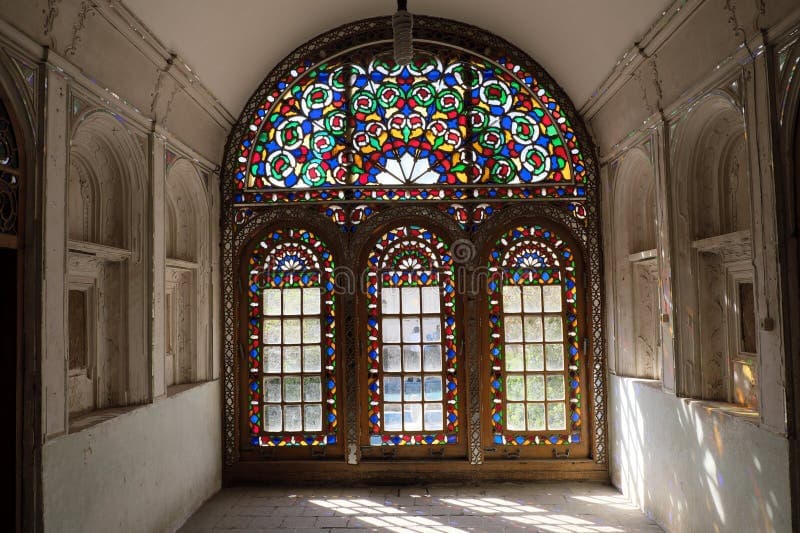Yellow Stained Glass Boosts Thermal Comfort by 22% in Historic Qazvin Houses

Qazvin, Iran – The intricate stained glass windows, known as "Orosi," found in historical Iranian houses like the Aminiha Hosseiniyeh in Qazvin, are not merely decorative but also serve a significant functional role in enhancing indoor thermal comfort and daylight performance. Recent research highlights that the yellow-colored glass in these traditional windows can lead to a 22% improvement in annual thermal comfort compared to other glass types. The tweet by "Cyrus II of Persia" on August 14, 2025, drew attention to these "Stained glass windows of a historical house in Qazvin, Iran," showcasing their enduring beauty and architectural significance.
Aminiha Hosseiniyeh, a prominent example of Qajar-era architecture in Qazvin, was constructed in 1858 by wealthy merchant Haj Mohammad Reza Amini. This sprawling complex, which includes a section dedicated as a Hosseiniyeh for religious ceremonies, is celebrated for its two courtyards, three parallel halls, and intricate mirror work. Notably, the southern hall features nine latticed Orsi windows with colored panes, creating a vibrant interplay of light and color within the interior spaces.
The traditional Orosi window, a hallmark of Persian architecture, integrates geometric patterns with colorful glass pieces. These windows were historically designed to control light, manage heat, and provide aesthetic appeal. A study focusing on the Kazeruni House in Shiraz, which features similar Orosi windows, found that while all glass colors provided acceptable daylight performance, yellow glass offered the most favorable thermal conditions throughout the year and achieved the highest spatial Daylight Autonomy (sDA) values.
The research further indicated that Orosi windows with yellow glass provided the highest number of thermal comfort hours annually, outperforming other variants. Although the impact on air temperature differences between various glass colors was minimal, the yellow Orosi consistently demonstrated superior thermal comfort on both the hottest and coldest days. This suggests that the strategic use of colored glass, particularly yellow, was an advanced architectural solution for climate control in historical Iranian dwellings, blending artistic expression with practical environmental benefits.